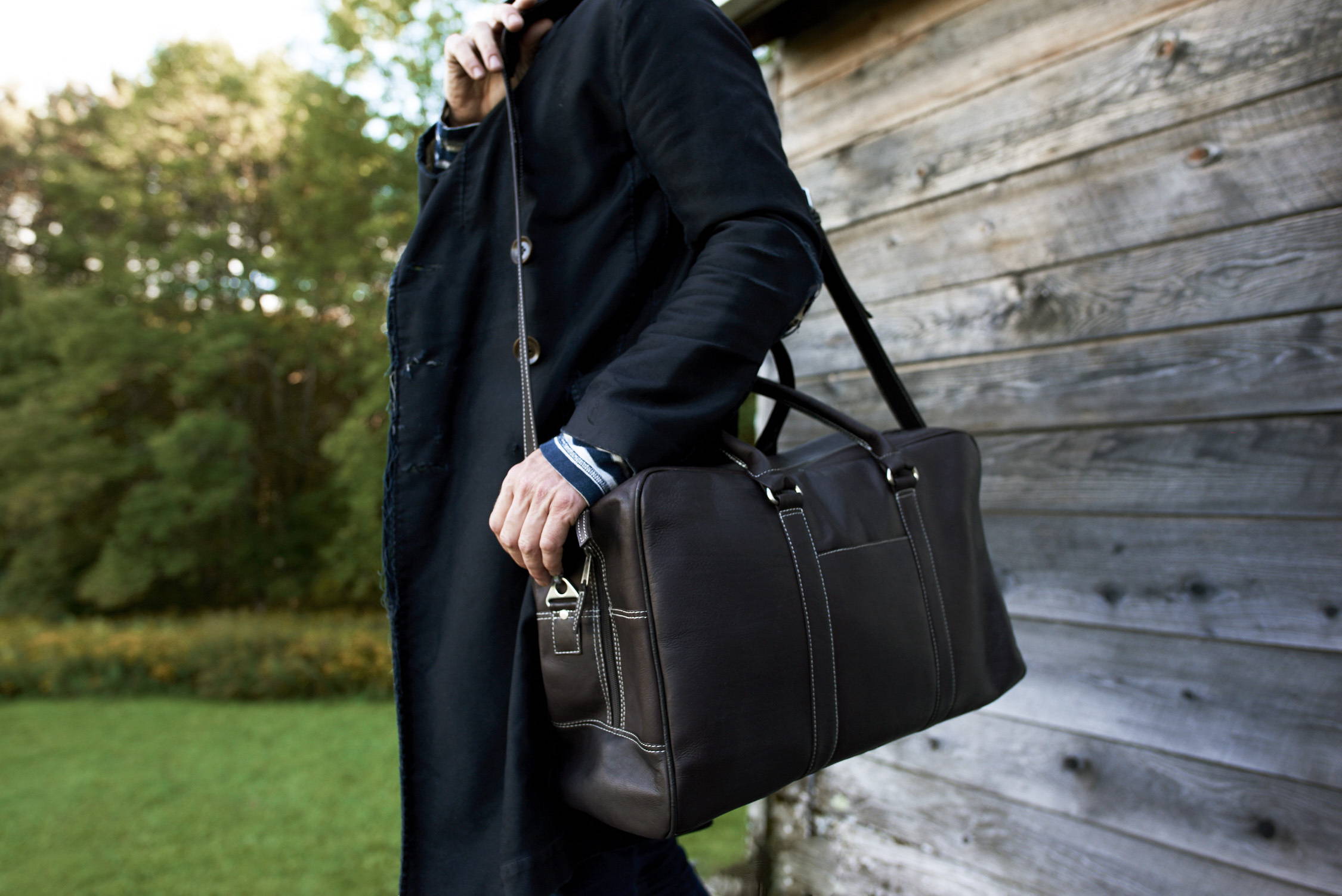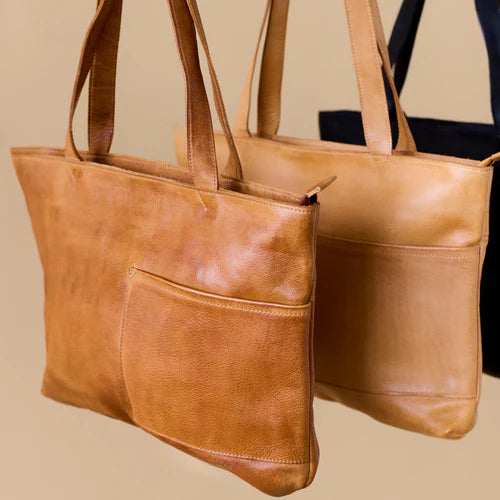
How To Store Leather Bags
Storing leather bags the right way comes down to three main things: picking the right spot, using a dust bag, and making sure your bag is completely dry before you put it away.
This guide walks you through everything you need to know about preparing your leather goods for storage, storing them correctly, and why doing it right actually matters for your investment.
Ready? Let's go.
Preparing Your Leather Bag for Storage
Before you pack your bags away for weeks or months, you need to do some prep work. Skip this step and you might open up your storage area to find damaged, moldy, or cracked leather. Here's how to store leather bags properly:
Cleaning
-
Remove all items: Empty every pocket and compartment. Give your bag a gentle shake to remove any debris, crumbs, or hidden lip balms. A quick pass with a vacuum’s soft brush attachment can help.
-
Dust and wipe the bag: Using a damp, soft cloth, gently wipe the entire bag and its surface to remove any surface dirt.
-
Spot clean: Use a specialized mild leather cleaner to remove tougher stains and marks. Don't use products that contain harsh chemicals such as ammonia or bleach. Always test it on a small, inconspicuous area beforehand to ensure it doesn't damage the leather. You might want to consider dry cleaning if you cannot remove the stains yourself.
-
Allow to air dry: This step is non-negotiable. Any moisture trapped in your leather during storage can lead to mold, mildew, or permanent damage. So, allow your leather bags to air dry completely, away from direct light exposure or harsh heat sources like hairdryers or heaters.
Conditioning
-
Use the right leather conditioner: Apply a high-quality leather conditioner to your bags, like waxes for full-grain leather or light creams for softer leather types. Conditioning helps restore the leather’s natural oils, keeping it supple, durable, and in tip-top condition.
-
Test first: When using leather conditioners for the first time, test in a small, hard-to-see area first to check for any discoloration or damage.
-
Apply the conditioner: Apply the product as per the manufacturer's instructions. When in doubt, less is more!
-
Allow to dry: After applying the conditioner, let your bag rest for a few hours or overnight to allow the product to seep deep into the fibers. Let your bag air-dry naturally, away from direct sunlight.
-
Remove excess product: Gently wipe away excess conditioner with a clean microfiber cloth for a smooth finish before storage.
Now that your leather is prepped and ready, let's get into the actual storage methods.

10 Easy Ways to Store Leather Bags
No matter which type of leather your bag is made from, these 10 storage methods will keep it in top condition:
1. Choose the right spot
Location is everything when it comes to storing leather goods. You want to find the perfect spot that's consistently cool, generally between 50°F and 70°F.
Stay clear of temperature danger zones such as blazing attics, freezing basements, or anywhere with major temperature fluctuations. Extreme temperatures cause leather to expand and contract, leading to cracking and warping. This also means you should avoid direct sunlight at all costs!
Humidity is another thing to be cautious of. Aim for areas with 40-50% humidity levels: not too dry, not too moist, but just right. Why? Because excess moisture buildup can cause mildew and [mold] growth. If your storage area feels too humid, put a dehumidifier nearby.
A few good leather bag storage areas include:
-
A clean, dry corner (or dedicated shelf) in your bedroom
-
Closets, open shelving, or wall-in wardrobes
-
Over-the-door hangers or under-bed storage boxes
2. Use a dust bag
These breathable fabric gems are absolute lifesavers. They're specifically designed to protect your leather bags from dust and dirt while allowing good air circulation.
Don't have a dust bag? No problem! Clean, white cotton pillowcases are fantastic alternatives. Just make sure they are white (or a very light color), as darker hues may cause dye transfers.
Top tip: Avoid plastic bags as they can trap moisture and prevent air circulation.
3. Use storage containers
You might think airtight containers are better for protecting your bags, but that's actually the wrong approach for leather. Leather needs to breathe, so stick with breathable storage containers (or breathable bags) to prevent excessive moisture buildup, mold growth, and permanent damage.
Clear, breathable storage boxes work well for organizing multiple bags, including your shoulder bag collection. You can see what you have without having to hunt through everything.
Top tip: Vacuum-sealed bags are also off the table.
4. Wrap the bag in paper
Sometimes your leather items need a little extra TLC, and this is where acid-free tissue paper comes to the rescue. This paper is gentle on delicate materials while providing excellent protection.
Wrapping your Gabriel Crossbody in acid-free paper creates a protective barrier against dust, scratches, and any other kind of damage.
Top tip: Avoid newspaper or colored tissue paper, as they can transfer ink and dyes onto your leather goods.

5. Maintain the bag's shape
Maintain your leather handbag's shape during storage by filling it with bubble wrap or acid-free tissue paper. Clean white towels also work. The trick is to fill the bag gently without overstuffing it.
For structured bags, like the Margie Tote, stuff each compartment individually to prevent the bag from collapsing or developing those dreaded creases and wrinkles.
Top tip: Always store leather bags in the upright position wherever possible to maintain their shape.
6. Use silica gel packs
Toss a few silica gel packs into your storage area, and they'll quietly absorb excess moisture and prevent musty odors that can develop in enclosed spaces.
You can buy silica packs (or moisture absorbers) specifically for storage, or better yet, save the ones that come with new purchases! Just make sure they're in good condition. If the packet is torn or damaged, it's time for a replacement.
7. Allow some breathing room
Leather bags need proper ventilation. Cramming multiple bags together is asking for trouble, as they can crease, wrinkle, and be damaged from overcrowding.
Give each bag enough room to maintain its natural shape without pressing too tightly against others. This is particularly important for softer styles, like spacious leather totes and sling bags, that can easily develop permanent creases from pressure.
8. Recondition the leather
A light conditioning before long-term storage can go a long way. This helps keep the leather supple and prevents cracking. Before you start, know which type of leather you're working with, as different variations call for different treatments.
Top tip: Wondering how to care for PU leather bags? Check out our website for more information.
9. Use a hanger
If you've got the space, hanging your bags is the perfect storage solution. However, never hang your leather handbag from its handles or straps, as this can cause it to distort over time.
The best way to hang leather bags is by using the loops or ties on dust bags, which distribute the weight evenly. If your bag doesn't have a dust bag with loops, consider storing it in a different way to avoid damage.
10. Check on them often
Leather bags aren't something you can store and forget about. They need regular check-ups to stay in good condition. Every month or so, take a look at your stored bags and check for early signs of mold, mildew, or other damage.
It's also a good idea to take your bags out of storage for a day or two every few months. This prevents musty odors and keeps the leather looking (and smelling!) fresh.
Top tip: Rotate your bags every other month to prevent premature wear and tear.

Why Proper Leather Storage Matters
Proper leather storage matters because it helps keep leather bags, jackets, and wallets looking good for years. Here's why it makes such a big difference:
-
Prevents drying out: Leather can dry and crack if exposed to excessive heat or direct sunlight. Proper storage in cool, moderately humid conditions keeps the leather supple and soft.
-
Avoids mold growth: Storing leather in damp areas can lead to mold growth and permanent damage. Use breathable covers to store your leather products and avoid plastic bags or airtight containers at all costs.
-
Maintains shape: Filling bags with a white towel, bubble wrap, or acid-free tissue paper helps retain its original shape, preventing deformation. Storing bags upright also prevents pressure marks and creases.
-
Protects hardware: Zippers, buckles, clasps, and other metal parts can rust or tarnish if stored in the wrong conditions. Proper storage keeps all the hardware looking and working like new.
-
Extended lifespan: When you combine proper storage with regular leather care and conditioning, your leather bags can last for decades instead of falling apart after a few years.
FAQs
Can I store leather bags in plastic?
No, do not store leather bags in plastic bags, as this traps moisture and prevents air circulation. Instead, store your leather goods in dust bags or breathable covers.
How do I keep my leather bag in good condition?
The best way to keep your leather goods looking fresh is through regular care and maintenance. Clean them gently when needed, condition them every few months, and store them properly when not in use.
How can I store a leather jacket?
Store leather jackets in a cool, dry place away from direct sunlight and heat sources, which can cause the leather to dry out and crack. Use a wide, padded hanger to maintain the jacket's shape, and cover it with a breathable garment bag that allows air circulation.
Final Thoughts
Taking care of your leather bags through proper storage isn't complicated and makes a huge difference in how long they last and how good they look. By following our storage tips, your leather bags will stay just as beautiful as the day you brought them home.
If you're looking to add more buttery-soft full-grain leather goods to your collection, browse Latico Leather's fantastic range of best-sellers for that one-of-a-kind piece that's made just for you.

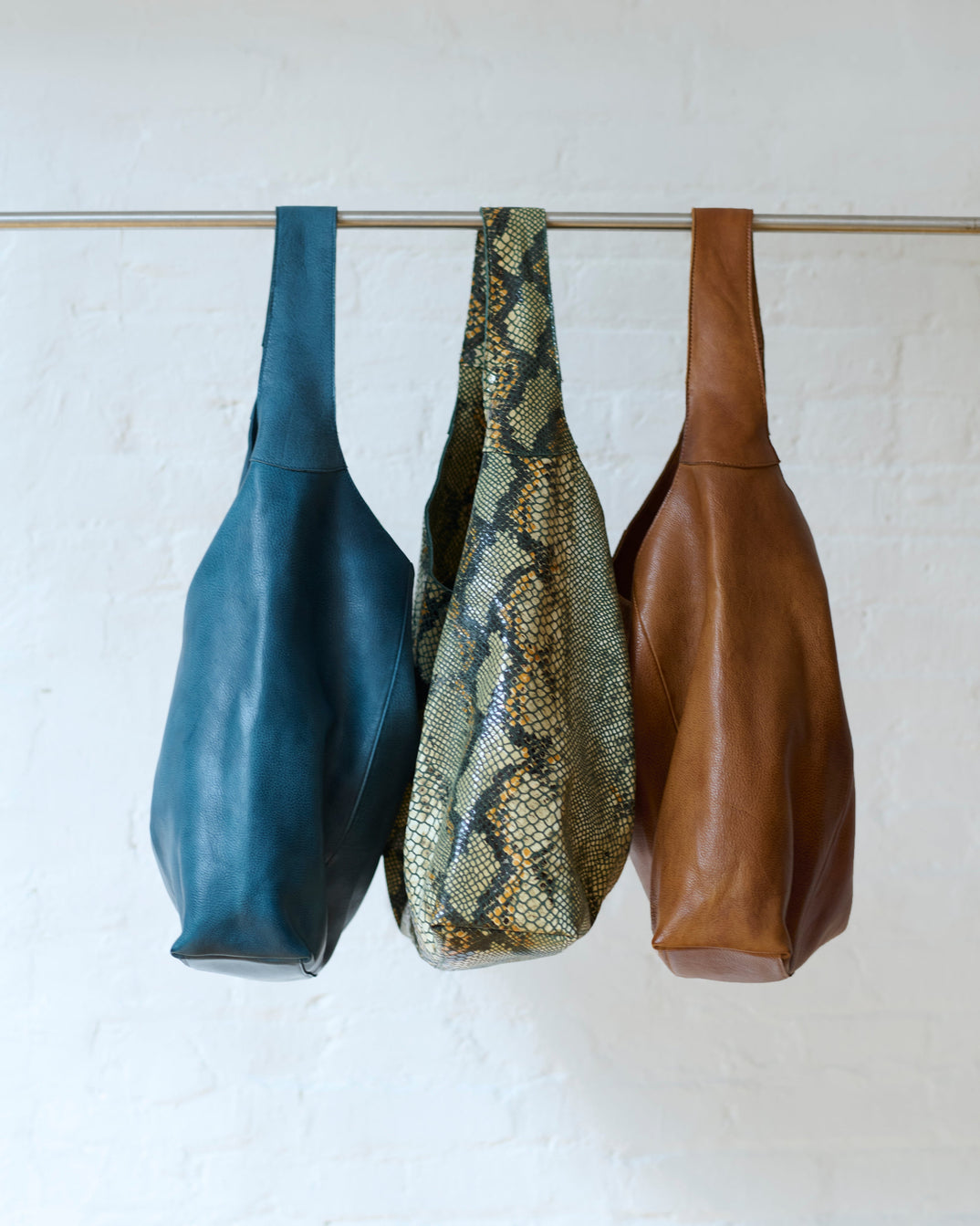
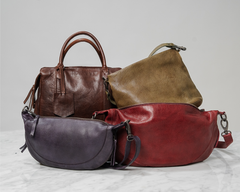

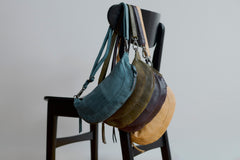

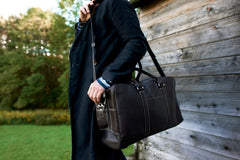

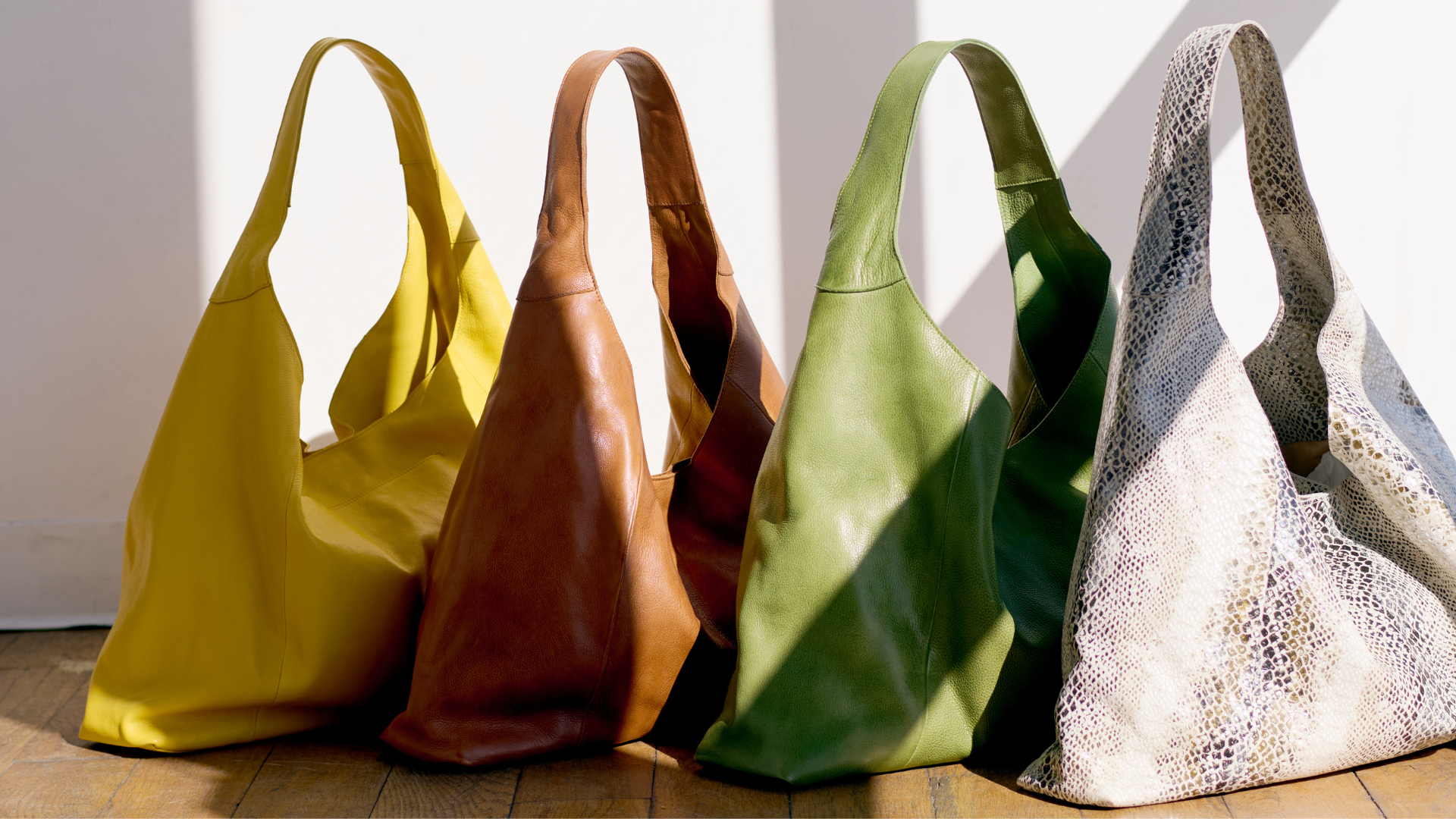
 Black
Black Bubble Black
Bubble Black Charcoal
Charcoal Cognac
Cognac Brown
Brown Cafe
Cafe Walnut
Walnut Almond
Almond Saddle
Saddle Eggplant
Eggplant Oxblood
Oxblood Burgundy
Burgundy Aubergine
Aubergine Tan
Tan Hazel
Hazel Ballet Slipper
Ballet Slipper Blush
Blush Camel
Camel Red
Red Orange
Orange Natural
Natural Burnt Orange
Burnt Orange Poppy
Poppy Plum
Plum Rosa
Rosa White
White Oat
Oat Grey
Grey Cobra
Cobra Desert Trail
Desert Trail Denim
Denim Indigo
Indigo Emerald
Emerald Teal
Teal Turquoise
Turquoise Sky Blue
Sky Blue Grass
Grass Green
Green Moss
Moss Olive
Olive Yellow
Yellow Lemon
Lemon Honey
Honey Chartreuse
Chartreuse Mustard
Mustard
